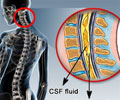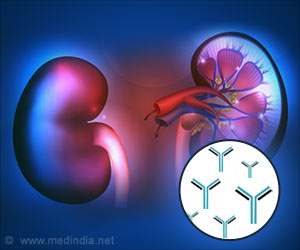Scientists at the University of Wisconsin-Madison have gained significant insights into how a gene in the fruit fly controls the proper development of synapses, connections between
A gene found in fruit fly plays an important role in establishing the proper development of synapses,which are connections between brain cells, scientists at the University of Wisconsin-Madison have revealed.
The researchers say that their study on the "nervous wreck" gene in fruit flies may help understand how irregularities like the growing of too large or too small synapses - associated with motor and cognitive impairment, learning and memory difficulties, and other neurological disorders - occur.Writing about their findings in the journal Neuron, geneticists in the College of Agricultural and Life Sciences said that their findings might be helpful in finding potential new treatments for a genetic developmental disability, which was shown to result from mutations in a human version of "nervous wreck" in a previous study.
"The precise regulation of synaptic growth - not too much and not too little - is a complex biological process. We really need to have a deep understanding of how all the factors involved are working together to develop rational treatments for neurological disorders associated with aberrant synaptic growth," says Kate O’Connor-Giles, a postdoctoral fellow in the genetics department who led the study.
During her fruit fly study, O’Connor-Giles focussed on a particular type of synapse known as the neuromuscular junction, which is relatively easy to examine and closely resembles the synapses found in the central nervous system of humans.
She used genetic, biochemical and imaging techniques to determine the role "nervous wreck" plays in the proper formation of synapses.
Her study showed that the "nervous wreck" protein appears to be part of an important protein complex that helps regulate the density of certain receptors on the surface of the nerve cell at the synapse.
Advertisement
When the protein complex is working properly, it moves the receptors back inside the nerve cell, where they can no longer receive and respond to the pro-growth signal, at the appropriate time.
She believes that problems with other proteins in the complex also lead to synaptic overgrowth in fruit flies, and may contribute to developmental disabilities in humans as well.
O’Connor-Giles’ study might have focussed on synapses undergoing initial formation, but she insists that her findings likely apply to adult brain cells, too.
"The presumption is that the same mechanisms that are at play during the initial formation of synapses are then recruited later in life when these synapses need to be modified in response to experience or injury. So by understanding the initial development of synapses, we may also be getting at the molecular mechanisms underlying plasticity," she says.
She also hopes that her findings may open the door for new treatments for various neurological disorders.
"Being able to manipulate synaptic growth is going to be crucial for treating traumatic spinal chord injuries. It’s also going to be important for treating a broad array of other disorders, including epilepsy and developmental disabilities," says O’Connor-Giles.
Source-ANI
RAS/K











